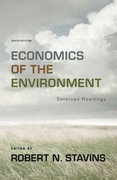(i) Define what is an unbiased estimator. Show that X is an unbiased estimator for E(X,) = under the usual assumptions. (5 points) (ii) If E(X;) = / and Var(X;) = o', and observations are independent of each other. what does the Law of Large Numbers and Central Limit Theorem state about the sample mean X =(Ci-1X)/m? (6 points) (mii) Is the following statement true or false? Explain. "If I always provide an estimate of 37 for whatever simple I obtain, this estimator is the most efficient because its variance is zero." (5 points) (iv) Are the following valid mill hypotheses in statistical testing? Explain. (a) py = 100; (b) X = 100. (5 points) (v) What do the no perfect multicollinearity and zero conditional mean assumption mean in the basic assumption of linear regression model? What are the consequences if they are violated? (8 points) (vi) What are the four factors that affect the variance of individual slope coofficient estima- tors under OLS for a multiple regression model? How do they affect the variance? (6 points)Question 2 (12 points) Lot = be a random column vector of size 3 : Write out a's and as' in terms of 21, 22 and 2a. (8 points) If = ~ N(0, I), what is the distribution of 2's? (2 points) If = ~ N(O, I,), what is E(=s')? What is E(:'s)? (4 points) If a = (1, 1, 1)' (a column vector of 1), what is a's? Calculate E(a's) and Var(a's). (3Question 3 We want to know about the expenditure on food in a month for students in this university. In particular we want to estimate the mean of their food expenditure. Now we randomly sample (n) 225 students. The sample mean food expenditure obtained is Y = 962.5 with standard deviation of the sample s = 88.8. We want to test the hypothesis that Ho : p = 1000 against #1 :a * 1000. (a) What test statistic do we use? What is its distribution if the null is true? (3 points) (b) Calculate the statistic and carry out the test at 5% significance level. (Critical value is 1,96.) (5 points) (c) Calculate the 95% two-sided confidence interval for the population mean food expendi- ture. (3 points) (d) Is the 99% two-sided confidence interval longer or shorter than the one at 95%? Why? (2 point)Question 4 Consider one example we have gone through in class. We want to see what determine student's test score in school. The dependent variable testser is the average test score of a school, str is the student-teacher ratio of the school (number of student per teacher), and avging is the average income of families (per $1000) in the school district, Student-teacher ratio captures how the class size can affect students' learning, while average income indirectly captures intensity of human capital investment from the family. Here we estimate testser, = 8 + Ajatr, + Baaugine, + Agauging? + Asangine) + us, where square and cube of average income are also included. The following shows the regression output from Stata: . reg testsce ser avginc avginc? avginci Source of Number of obs = 420 F( 4, 415) - 145.49 Made 16144.9747 21536.2437 Prob a F 0.0090 Residua 85964.6189 415 158.950889 -Squared # 0.5663 adj .-squared 0.5622 Total 152109.594 419 363.030056 RODE MSE 12.608 testser conf. Ntd. EFF. [95% conf. Interval] SEP -.9277523 1369431 -2.75 0.006 1.590081 -.2654239 avginc 5.124736 . 8536044 6.00 0.000 3. 446409 6. 802664 avginc2 -,1011071 -0371171 -2.72 0.007 -, 1740681 --0261462 avginc3 . 0007293 .0004685 1.56 0.120 -.0001917 -0016503 -cons $17.8974 4.679455 71.19 0.000 600.8162 634.9586 (an) Interpret conefficient on student-teacher ratio (str). Is it statistically significant at 5% level? (Critical value for 2-sided test under normal distribution is 1.96.) (5 points) (b) If instead we want to test whether the coefficient on atr is -2.0, what is the test statistic and can we reject the null at 5% significance level? (3 points) (c) Write down the formula of R" in terms of various sum of squares and verify that the number shown on the right column is the same as calculated from the sum of squares shown on the left, Do the same for R2 (or adjusted R2.) (4 points) (d) What is the F test on the right column testing? Write down the null and alternative hypothesis. How can we calculate this statistic with the sums of squares available? Can we reject the null hypothesis at 5% level? (6 points) (e) Verify the confidence interval shown for the coefficient str using the formula introduced in class and numbers provided in the results. (4 points) (Continue next page. If you don't have enough space, you can write on the next page.) Now we would like to test the joint significance of the coefficients on average income and its square and cube terms. That is Ho :By = BA=By=0 using F test. (Note: In my notation, 8, is the intercept term.) (f) What is the alternative hypothesis? (2 points) The results for the restricted regression is shown below . reg testser str Source SS de MS Number of obs = 420 F( 1. 410) = 22 . 58 Model 7794.11004 7794. 11004 Prob > F 0.0000 Residual 144315.484 118 345.252353 R-squared 0.0512 Adj R-squared 0.0490 Total 152109.594 419 363.030056 ROOT NSE 18.581 testser coet std. Err. Palt [95% conf . Interval] str -2.279808 4798256 4.75 0.000 -3.22298 -1.336637 _coins 698.933 9.467491 0.000 680.3231 717.5428 Perform the test. What is the F statistic in this sample? What are the distribution and the degrees of freedom for the distribution under the null hypothesis? Can we reject the null hypothesis at 5% significance level? (Possible critical values: F1,2,005 = 3.84; F3,ac,0.05 = 2.60, F5,co,0.05 = 2.21, where the subscripts means the numerator and denominator degrees of freedom and significance level respectively.) (6 points)










